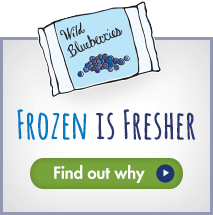Wild Blueberry Press Release
New Research Suggests Potential Role for Wild Blueberries In Promoting Wound Healing
February 20, 2019
FOR IMMEDIATE RELEASE
New Research Suggests Potential Role for Wild Blueberries
In Promoting Wound Healing
AUGUSTA, Maine — February 19, 2019 — New research, published in The Journal of Cellular Biochemistry, (2019 Jan 30. doi:10.1002/jcd.28383) reveals that the unique phenolic acids found in Wild Blueberries speed up the migration of cells that line our blood vessels (endothelial cells). Cell migration (the moving of cells in order to begin forming new tissue) is an integral part of angiogenesis (the development of blood vessels to supply the newly forming tissue) and the wound healing process. Additionally, the research found that a combination of phenolic acids and anthocyanins in Wild Blueberries also promoted cell migration. These new findings have positive implications for wound healing and tissue repair, which are especially important for people with diabetes, cardiovascular disease and conditions associated with ischemia, such as strokes.
The study, entitled Phenolic and Anthocyanin Fractions from Wild Blueberries, Differentially Modulate Endothelial Cell Migration Partially through RHOA and RAC1, was conducted at the University of Maine in Orono, Maine, under the direction of Dorothy Klimis-Zacas, Ph.D., FACN, at the University’s School of Food and Agriculture.
Panagiotis Tsakiroglou, Ph.D. conducted his doctoral research on this project. The research was funded by the Wild Blueberry Association of North America (WBANA) and supported by the USDA National Institute of Food and Agriculture.
Over the years, numerous studies have documented the beneficial health effects of Wild Blueberry consumption on inflammation and cardiovascular disease, as well as many other chronic diseases associated with aging. However, only a few studies have documented the effects of single anthocyanins and phenolic acids from berries on cell migration, angiogenesis and wound healing.
In this study, human umbilical vein endothelial cells were treated with fractions of anthocyanins and phenolic acids extracted from a Wild Blueberry powder. Cultures were treated with anthocyanins alone, phenolic acids alone and then with a combination of anthocyanins and phenolic acids. Time-lapse videos were analyzed, and endothelial cell speed was calculated. Findings indicate that endothelial cell migration is promoted by the Wild Blueberry phenolic acid fractions and also with the combination of the phenolic acids and anthocyanins, and the effect is concentration-dependent.
“While minor cuts and scrapes in most individuals have the ability to heal quickly on their own, a simple scratch, cut or sore for diabetic patients can take a long time to heal and may limit an individual’s mobility,” said Dr. Dorothy Klimis-Zacas. “That is because of reduced blood flow to the extremities and a decrease in endothelial cell proliferation and angiogenesis.”
Klimis-Zacas continued: “This novel research shows the synergistic action of compounds in Wild Blueberries and their ability to increase the formation of blood vessels for tissue perfusion and development. These findings have big potential not only for the promotion of improved wound healing and tissue regeneration, but also in the development of new ways to treat burn patients. Future applications may also include nanodelivery of these compounds to persons who have suffered strokes and phenolic compound eluting stents to decrease inflammation and promote healing of the vasculature associated with stenting”.
The Bioactive Compounds in Wild Blueberries
Wild Blueberries are known for their rich bioactive compounds. A 2013 study titled Dietary Bioactive Compounds and Their Health Implications1 examined 25 fruits and 27 vegetables most commonly consumed in the United States and found that Wild Blueberries have the highest total phenolic content per serving. Phenolics are phytochemical compounds in plants that protect them from the insults of nature while assisting with essential functions of reproduction and healthy growth. Anthocyanins, a flavonoid with potent antioxidant properties, are the plant pigments that give fruits and vegetables their blue, red, pink and purple colors.
“This is yet another study that indicates that the synergistic effects between the many components of Wild Blueberries can play an important role in health promotion,” said Kit Broihier, MS, RD, nutrition advisor to the Wild Blueberry Association of North America. “The potential practical applications of this interesting research are certainly exciting and far-reaching. Apparently, the health benefits of Wild Blueberries aren’t limited to just those offered by consuming them!”
Contact and Interview Opportunities:
For briefings or interviews with authors of the paper, please contact Dorothy Klimis-Zacas at dorothea@maine.edu and 207- 581-3124. Kit Broihier, MS, RD, nutrition advisor to the Wild Blueberry Association of North America, can be reached by email at nutricomminc@mac.com
About the Wild Blueberry Association of North America
The Wild Blueberry Association of North America (WBANA) is a trade association of farmers and processors of Wild Blueberries from Maine and Canada who are dedicated to bringing the Wild Blueberry health story and unique Wild Advantages to consumers and the trade worldwide. WBANA is dedicated to furthering research that explores the health potential of Wild Blueberries. Hundreds of studies have been conducted on the potential health and disease fighting benefits of Wild Blueberries. For news, recipes, and related health information about Wild Blueberries, visit www.wildblueberries.com. For the latest updates, read our blog. Visit us on Facebook or on Twitter.
1 Journal of Food Science – Dietary Bioactive Compounds and Their Health Implications Rui Hai Liu Vol 78,51, 2013.
-###-
Belinda Donovan
Ethos
207-856-5737 (office)
207-318-8026 (mobile)
bdonovan@ethos-marketing.com


